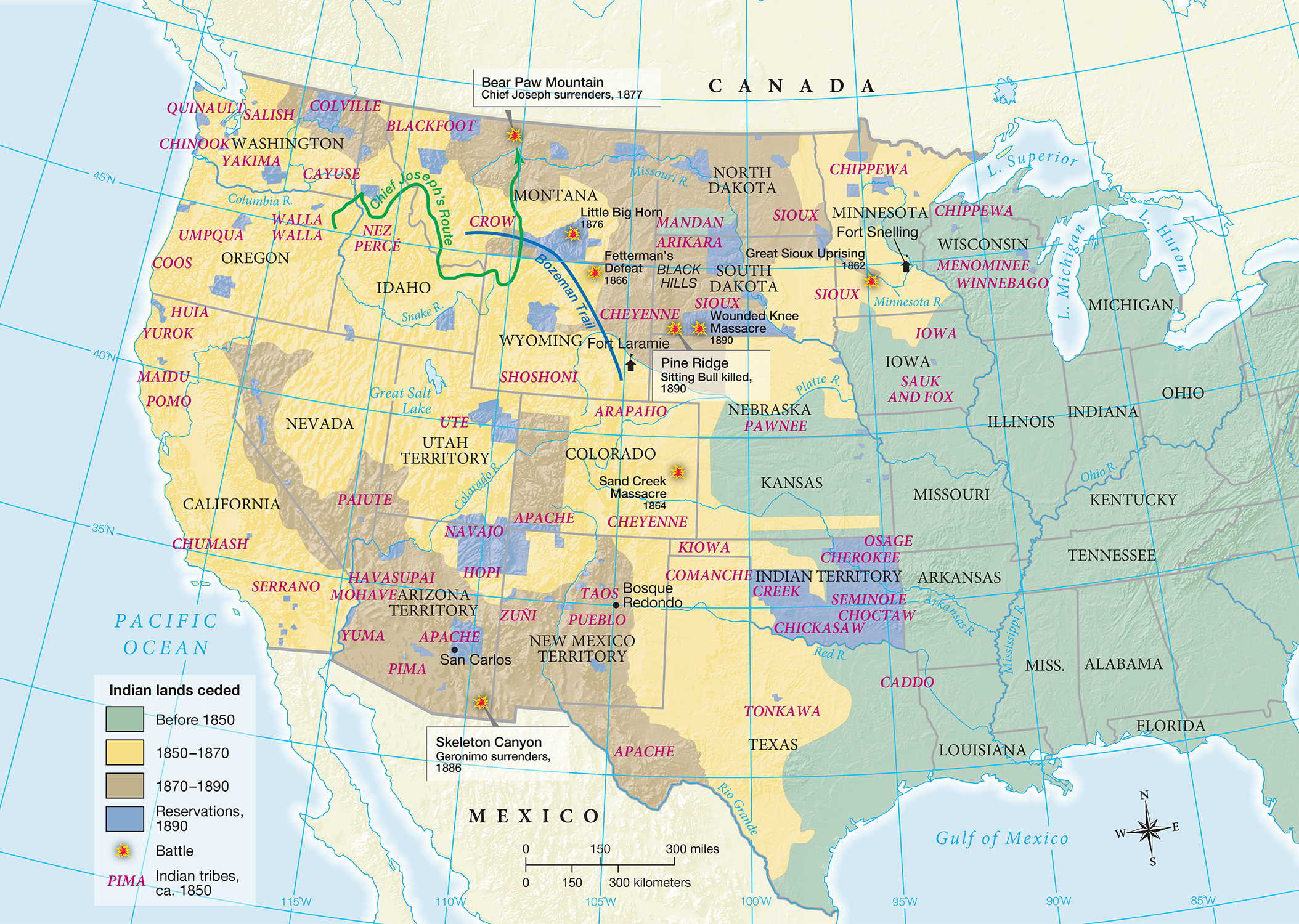Conquest and Empire in the West
While the European powers expanded their authority and wealth through imperialism and colonialism in far-flung empires abroad, the United States focused its attention on its own western lands. From the U.S. Army attack on the remainder of the Comanche empire to the conquest of the Black Hills, whites pushed Indians aside as they moved West. As posited by Frederick Jackson Turner, American exceptionalism stressed how the history of the United States differed from that of European nations, citing America’s western frontier as a cause. Yet expansion in the trans-Mississippi West involved the conquest, displacement, and rule over native peoples—a process best understood in the global context of imperialism and colonialism. (See “Beyond America’s Borders.”)
The U.S. government, through trickery and conquest, pushed tribes off their lands (Map 17.1) and onto designated Indian territories or reservations. The Indian wars depleted the Native American population and handed most Indian land to white settlers. The decimation of the bison herds pushed the Plains Indians onto reservations, where they lived as wards of the state. Thus did the United States, committed to an imperialist, expansionist ideology, colonize the West.

MAP ACTIVITY Map 17.1 The Loss of Indian Lands, 1850–1890 By 1890, western Indians were isolated on small, scattered reservations. Native Americans had struggled to retain their land in major battles, from the Santee Uprising in Minnesota in 1862 to the massacre at Wounded Knee, South Dakota, in 1890. READING THE MAP: Where was the largest reservation located in 1890? Which states on this map show no reservations in 1890? Compare this map to Map 17.3. CONNECTIONS: Why did the federal government force Native Americans onto reservations? What developments prompted these changes?
